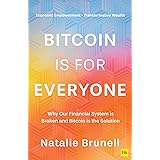Imagine, for a moment, that you are standing at the precipice of a new financial frontier, captivated by stories of unprecedented wealth generation. You hear whispers of a digital asset class that has not only outperformed traditional markets but has redefined investment paradigms over the last decade. Yet, a palpable sense of trepidation accompanies this excitement; the volatility is legendary, and the landscape is riddled with complexities that can overwhelm even seasoned investors.
This exact scenario resonates with countless individuals eyeing the crypto market today, especially after the recent spotlight shone on spot Bitcoin ETF approvals. As the video above eloquently highlights, making an informed decision before you invest in crypto is paramount. Navigating this dynamic domain requires more than just rudimentary knowledge; it demands a deep understanding of its inherent mechanics, risks, and strategic nuances. While the video provided an excellent overview of 10 crucial considerations, this comprehensive guide delves deeper, expanding on these foundational insights to equip you with an expert-level understanding for your cryptocurrency investment journey.
Understanding the Cryptocurrency Investment Landscape: Beyond the Basics
The burgeoning digital asset economy presents a multitude of entry points, each with its own risk profile and operational characteristics. One might assume that all access methods are largely equivalent; however, significant distinctions often arise. As the video outlined, the emergence of Exchange-Traded Funds (ETFs) and similar regulated products offers a familiar gateway for traditional investors seeking crypto exposure.
Navigating Crypto Exposure: ETFs vs. Direct Ownership
Spot Bitcoin ETFs, in particular, have garnered immense attention, presenting a seemingly secure and regulated avenue to gain exposure to Bitcoin’s price movements without directly holding the asset. These instruments are undeniably appealing, especially for institutional players or those accustomed to traditional brokerage platforms. Nevertheless, this convenience often comes with inherent trade-offs that demand careful consideration.
Firstly, the operational hours of ETFs, tethered to conventional stock market schedules, starkly contrast with the 24/7 nature of the underlying crypto markets. Imagine if a major geopolitical event or a significant network upgrade occurs outside regular trading hours; investors holding an ETF might face considerable price dislocation. This temporal mismatch can preclude immediate action, potentially leading to missed opportunities or exacerbated losses during rapid price fluctuations. Secondly, an ETF structure inherently means you do not own the underlying asset, thereby introducing a layer of counter-party risk. You hold a share representing a claim on Bitcoin, not the Bitcoin itself. In stark contrast, direct ownership of cryptocurrencies, particularly through self-custody, eliminates this intermediary risk, granting unadulterated control over your digital wealth. Furthermore, the current regulatory environment means that ETF offerings are largely concentrated on Bitcoin, with limited options for exposure to the broader altcoin market. This restriction can significantly limit portfolio diversification for investors seeking higher-potential, albeit riskier, opportunities in the wider crypto ecosystem.
Conversely, direct acquisition of cryptocurrencies through centralized exchanges (CEXs) or decentralized exchanges (DEXs) offers immediate ownership and access to a vast array of digital assets. While CEXs simplify the buying process, they still entail custodial risk, as the exchange holds your private keys. DEXs, built on blockchain technology, facilitate peer-to-peer trading, offering a higher degree of self-sovereignty but demanding greater technical proficiency. Understanding these distinct approaches is crucial when determining how you wish to invest in crypto assets.
Confronting Volatility: Strategies for a Dynamic Market
The conversation around cryptocurrency is incomplete without acknowledging its notorious volatility. The video correctly points out that Bitcoin’s price can fluctuate by up to 10% in minutes, with altcoins frequently experiencing shifts of 20% or more within the same timeframe. This intense price action is not merely a statistical anomaly; it is an inherent characteristic rooted in multiple factors.
Primarily, the speculative nature of cryptocurrencies drives much of this volatility. Unlike traditional equities backed by tangible assets or established revenue streams, many crypto projects derive their value from future utility, network effects, and community adoption. This nascent stage of development makes them susceptible to market sentiment, news cycles, and speculative fervor. Moreover, the crypto ecosystem is heavily influenced by high levels of leveraged trading. Participants can amplify their exposure using borrowed capital, leading to dramatic price swings. During bull markets, small rallies can escalate into “massive pumps” as liquidations of short positions occur (short squeezes). Conversely, during bear markets, minor dips can cascade into full-blown crashes as leveraged long positions are force-closed (long liquidations), creating a self-reinforcing downward spiral.
Managing the psychological toll of such volatility is as critical as managing financial risk. Emotional decisions, often characterized by buying at market peaks and selling during crashes, are detrimental to long-term investment success. Fortunately, expert strategies exist to mitigate these effects. Recognizing that larger market cap cryptocurrencies, like Bitcoin (BTC) and Ethereum (ETH), tend to exhibit less extreme volatility than smaller altcoins is a fundamental principle. This trade-off, however, often means accepting potentially lower, albeit more stable, returns. Furthermore, employing prudence with leverage is paramount. Limiting borrowed capital or implementing robust risk management techniques, such as strategically placed stop-loss orders informed by technical analysis, can protect capital. Understanding chart patterns, support/resistance levels, and key indicators can provide objective entry and exit points, fostering disciplined trading behavior.
Unpacking Crypto Assets: Coins, Tokens, and Their Underlying Value
A common misconception among new entrants is that all cryptocurrencies are fundamentally the same. However, the ecosystem is distinctly bifurcated into “coins” and “tokens,” each possessing unique characteristics and value propositions. Coins, such as Bitcoin (BTC) or Ethereum (ETH), are native to their own independent blockchains. They function as the primary medium of exchange within their respective networks, paying for transaction fees and serving as the foundational layer of security through mining or staking mechanisms. Their value is intrinsically linked to the security, decentralization, and utility of their underlying blockchain network.
Tokens, on the other hand, are built atop existing blockchain platforms, most commonly Ethereum via its ERC-20 standard, but also on networks like Solana, Binance Smart Chain, or Avalanche. They are created using smart contracts and do not possess their own independent blockchain. Their value is derived from their utility within specific decentralized applications (DApps), protocols, or ecosystems. This utility can manifest in various forms: governance rights, access to services, rewards for participation (yield farming), or representation of real-world assets. The ease of creating tokens, sometimes in mere minutes, explains the vast discrepancy in numbers – millions of tokens versus only dozens of coins. While many tokens lack genuine utility, those integrated into robust DApps with strong tokenomics can offer significant speculative potential. Ultimately, the performance of both coins and tokens is heavily influenced by prevailing market narratives, such as “digital gold” for Bitcoin, or narratives surrounding Decentralized Finance (DeFi), Non-Fungible Tokens (NFTs), or Web3 infrastructure for various tokens. Understanding these narratives is key to discerning future growth potential when you invest in crypto assets.
The Quest for Quality Information: Filtering Hype from Substance
One of the most formidable challenges for anyone looking to invest in crypto is sifting through the sheer volume of information—and misinformation—that saturates the space. The video rightly identifies a shortage of quality educational material, the inherent complexity of many projects, and a general lack of transparent data. This informational asymmetry creates fertile ground for hype cycles and unfortunate financial losses for unprepared investors.
Unlike traditional markets with established regulatory bodies and mandatory financial reporting, the crypto space, especially within its nascent projects, often operates with less stringent disclosure. Projects might be developed by pseudonymous teams, whitepapers can be dense and technically opaque, and market sentiment can be heavily swayed by influencers or anonymous social media accounts. Imagine attempting to evaluate a new startup without any audited financials, clear business model, or identifiable leadership team; this is often the reality in crypto. True quality information goes beyond superficial marketing. It involves analyzing a project’s technical architecture, evaluating the strength and transparency of its development team, scrutinizing its tokenomics (how its native token is distributed, vested, and used), assessing community engagement, and reviewing independent security audits of its smart contracts. Platforms that offer in-depth research, analysis, and access to expert insights, such as the Coin Bureau Club, become invaluable resources in this complex investigative process.
Market Cap vs. Price Tag: Demystifying Valuation in Crypto
A fundamental error frequently made by novice crypto investors is equating a low price tag with high growth potential. The video underscores this critical distinction: it is a cryptocurrency’s market capitalization, not its individual unit price, that dictates its realistic upside. Market capitalization is calculated by multiplying the circulating supply of a coin or token by its current price. This metric provides a far more accurate representation of a project’s overall size and valuation.
Consider two hypothetical cryptocurrencies: Crypto A trades at $0.01 with a circulating supply of 10 billion units, yielding a market cap of $100 million. Crypto B trades at $10,000 with a circulating supply of 10,000 units, also yielding a market cap of $100 million. Many new investors might be tempted by Crypto A, believing it can more easily reach “Bitcoin’s price” (which is incorrect reasoning) and thus offer 1000x returns. However, for Crypto A to reach a market cap of, say, $10 billion (equivalent to a mid-tier large-cap altcoin), its price would need to increase 100-fold to $1. For Crypto B to achieve the same $10 billion market cap, its price would need to increase 100-fold to $1,000,000. Both require the same percentage growth in market cap. The psychological appeal of a “cheap” asset often blinds investors to the underlying economics. Therefore, when evaluating a potential crypto investment, it is imperative to assess its market cap within its specific niche and compare it to larger, more established projects in the same category. This contextual analysis, alongside considering its listing on major exchanges (especially those accessible to large investor bases like the US), provides a more robust framework for predicting potential growth trajectories.
The Imperative of Self-Custody: “Not Your Keys, Not Your Crypto”
Among the core tenets of true financial freedom in the crypto space is the principle of self-custody. The adage “Not your keys, not your crypto” is more than a slogan; it encapsulates the very essence of decentralized ownership. When you hold the private keys (a cryptographic secret that proves ownership) to your crypto wallet, you possess unassailable control over your assets. Conversely, if an exchange or custodial service holds these keys on your behalf, your assets are subject to their terms of service, potential hacks, or even governmental seizure.
The act of being asked to record a 12 or 24-word seed phrase upon wallet creation signifies non-custodial ownership. This phrase is the human-readable representation of your private key, allowing you to restore access to your funds on any compatible wallet interface. This contrasts sharply with custodial services, where your relationship is akin to that with a traditional bank; the “money” in your account is a liability on the bank’s balance sheet, not physically yours. For serious investors aiming to achieve true financial sovereignty, maintaining control over one’s private keys is non-negotiable. This involves creating various types of crypto wallets. Hot wallets (mobile, desktop, browser extensions) are convenient for active trading but are constantly connected to the internet and thus more vulnerable to online threats. For long-term storage and maximum security, hardware wallets are indispensable. These physical devices store your private keys offline in a secure element, providing an “air-gapped” layer of protection against malware and phishing attacks. While not all cryptocurrencies are supported by every hardware wallet, thorough research on compatibility and security features is crucial before making a purchase. This foundational security measure is critical for any serious crypto investor.
Building a Resilient Portfolio: The Art of Crypto Diversification
Diversification, a cornerstone of traditional investment, is equally vital in the volatile crypto markets, albeit with nuanced application. While all digital assets fall under the “crypto” umbrella, their risk profiles, utility, and market behavior vary significantly. Bitcoin (BTC), for instance, often functions as the industry’s safe haven asset, attracting capital during broader market downturns due to its unparalleled decentralization, security, and proven track record. Conversely, during bull market rallies, capital tends to flow from BTC into more speculative altcoins, starting with Ethereum (ETH) and extending to smaller, higher-beta assets.
A well-structured crypto portfolio typically includes a balanced mix. Large-cap assets (e.g., BTC, ETH) provide a stable foundation, offering relative security and liquidity. Mid-cap assets present a balance of established utility and growth potential. Small-cap assets, while carrying higher risk, offer the potential for exponential returns if their underlying projects gain traction. Stablecoins, digital assets pegged to fiat currencies (predominantly the US dollar), serve as essential safe havens during periods of extreme volatility, allowing investors to de-risk without exiting the crypto ecosystem entirely. However, even stablecoins carry varying degrees of risk depending on their backing mechanisms (fiat-backed, crypto-backed, algorithmic). Beyond market capitalization, exposure to diverse “crypto narratives”—such as DeFi, GameFi, privacy, Layer 2 scaling solutions, or real-world asset (RWA) tokenization—can further enhance diversification, positioning a portfolio to capitalize on emerging trends during a bull market. The key is to select a manageable number of assets, allowing for diligent monitoring and informed decision-making.
Timing the Market: Understanding Crypto Cycles and Time Horizons
Unlike traditional markets, which are influenced by numerous macroeconomic factors, the crypto market, particularly Bitcoin, exhibits a pronounced four-year cycle, largely driven by the Bitcoin halving mechanism. This event, occurring approximately every four years, reduces the reward for mining new blocks by half, thereby constricting the supply of new Bitcoin. Historically, a bull market has commenced a few months after the halving, with peak prices often observed 12-18 months later. The next halving, slated for April, sets the stage for what many anticipate will be another significant market cycle.
While attempting to perfectly time market tops and bottoms is an exceedingly difficult, if not impossible, endeavor, understanding these cycles provides a strategic framework. For investors seeking substantial gains within a one to two-year horizon, aligning with the expected post-halving bull market trajectory could be optimal. This might involve accumulating favored assets before the market enters its euphoric “mania phase.” However, the video also underscores a powerful long-term perspective: retrospective analysis shows that simply holding and accumulating established assets like Bitcoin through multiple cycles has proven to be an incredibly profitable strategy over the past decade. This highlights the importance of an individual’s personal time horizon. Are you aiming for short-term speculative gains, or are you building multi-generational wealth? Your answer will dictate whether you focus on cycle timing or adopt a more patient, dollar-cost averaging approach to your crypto investment strategy.
Crypto as a Hedge: Technology, Finance, and Unseizable Assets
In an era of persistent inflation and increasing concerns about central bank financial control, understanding cryptocurrency’s role as a hedge is becoming increasingly pertinent. Historically, only technology and finance have consistently outpaced inflation over recent decades. Cryptocurrency, inherently a fusion of both, offers a compelling proposition: a digital asset that combines technological innovation with financial sovereignty. Moreover, truly decentralized cryptocurrencies like Bitcoin possess a unique characteristic: they are permissionless and unseizable.
This “unseizability” stems from their decentralized nature; there is no central authority to freeze or confiscate funds. Ownership is cryptographically proven, and control rests solely with the holder of the private keys. This attribute offers a distinct advantage over traditional assets or even physical gold, which can be subject to confiscation. Imagine a scenario where a seed phrase, a mere string of words, is all that stands between you and your financial autonomy. While Bitcoin transactions are publicly viewable on its blockchain, offering transparency, this comes with a trade-off for privacy. Nevertheless, its foundational decentralization positions it as a robust hedge against a financial system increasingly moving towards centralized digital currencies (CBDCs), which central banks themselves have indicated could incorporate pervasive surveillance mechanisms. For those concerned about safeguarding wealth against inflation and potential governmental overreach, strategic crypto investment in truly decentralized assets like Bitcoin offers a powerful alternative.
Dodging the Pitfalls: Identifying and Avoiding Crypto Scams
The allure of rapid wealth in cryptocurrency, combined with its complex and largely unregulated environment, creates a breeding ground for scams. This is perhaps the most critical warning for any prospective investor. The video touches on fake airdrops, giveaways, and impersonators, which are merely the tip of the iceberg. The sophistication of these scams is evolving rapidly, with deepfake technology making imposter accounts more convincing than ever.
Common crypto scams include phishing attacks (where malicious links attempt to trick you into revealing your private keys), rug pulls (where developers abandon a project after raising funds, taking all the invested capital), pump-and-dump schemes (artificial inflation of a coin’s price followed by a rapid sell-off by manipulators), and malicious smart contracts (exploiting vulnerabilities to drain wallets). Interacting with decentralized applications (DApps) or new protocols requires extreme caution and meticulous due diligence. A fundamental rule of thumb prevails: if an offer sounds too good to be true—whether it’s an unsolicited direct message from a “celebrity,” guaranteed returns, or free crypto—it almost certainly is a scam. Before connecting your wallet to any DApp or investing in a new token, thoroughly research the project’s legitimacy, audit reports, community sentiment, and the reputation of its developers. Utilizing a dedicated hardware wallet for cold storage of non-trading assets, as previously emphasized, further acts as a crucial barrier against direct wallet drainage. For anyone seeking to safely invest in crypto, vigilance and skepticism are your strongest allies against these pervasive threats.







